There are many corn products in the market. Some appear similar, so it may be challenging to
differentiate them. Some popular options are corn meal and corn flour. As much as they come
from milled, dried corn, they have different textures that help differentiate them. Cornmeal has a
gritty feel due to the coarse grinding, while corn flour is fine and smooth from the fine grinding.
This post delves deeper into what these products are, how they differ, nutrient content, how to
use them, and more.
Cornmeal vs. Corn Flour: How Different Are They?
Using these products can bring remarkable success or confusion. So, to make things easier and get you through the selection process, here are some significant differences. Cornmeal comes in three colors: white, yellow, or blue, depending on the corn used for processing. Yellow cornmeal is the most popular, though the yellow color also varies based on the yellow corn used. Corn flour is primarily yellow with no color additions or variations. So, don’t pick something colored in the store and call it corn flour because it’s not!
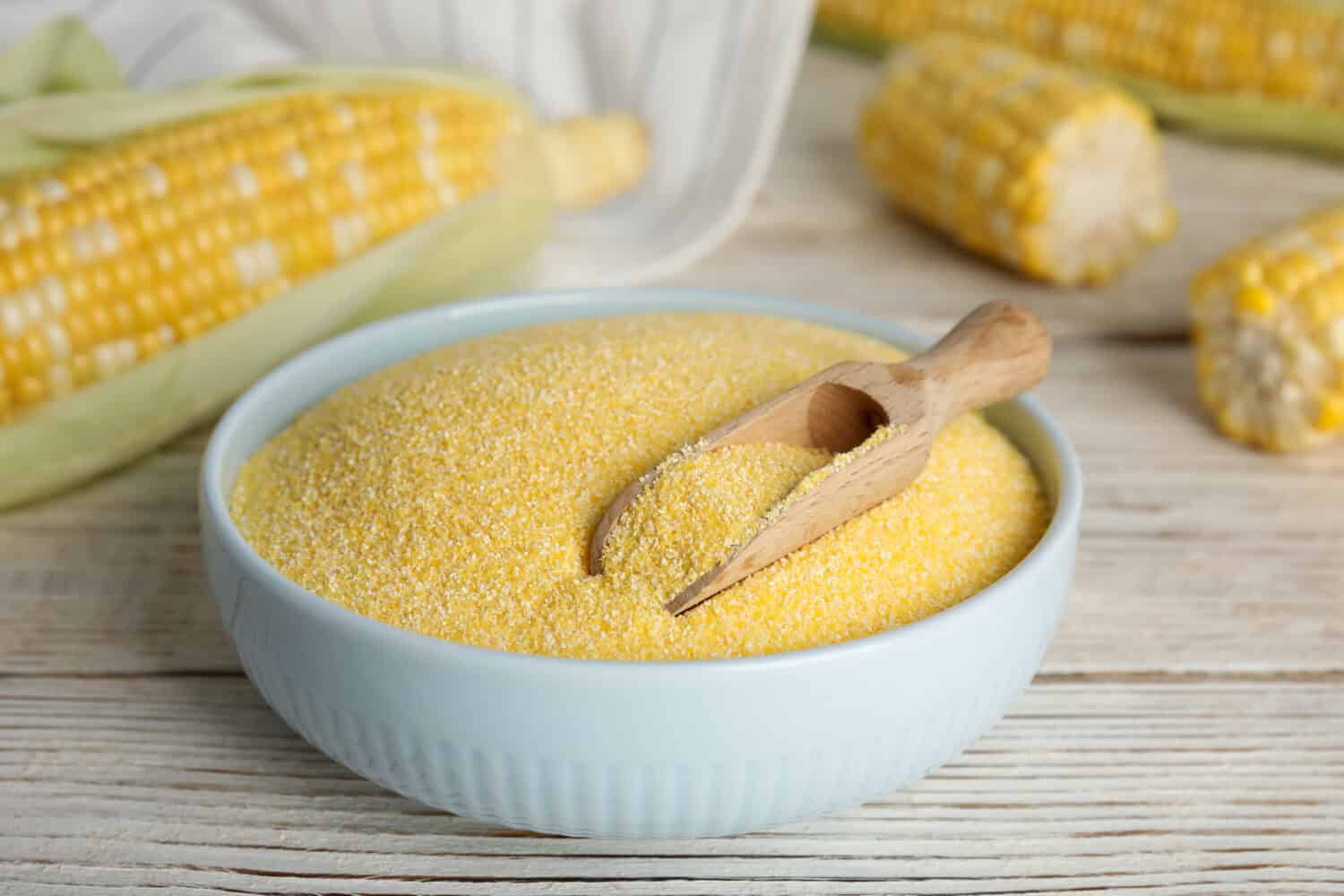
Yellow cornmeal is the most popular of the three types of cornmeal.
©New Africa/Shutterstock.com
Another key difference is the texture of both cooking ingredients. As mentioned earlier,
cornmeal usually has a coarse or rough surface. However, the texture can range from fine to
coarse but fine cornmeal is rare. Corn flour has a delicate and smooth feel. The grinding process gives it a fine consistency, making its uses entirely different from corn meal.
Their processing methods also differ hugely. Manufacturers take dried corn and put it through
steel rollers to produce corn meal. During the procedure, the machine strips the corn’s husk and germ parts of the corn, reducing the fat content within it. It helps minimize decay; hence it can last longer. In contrast, all aspects of the corn kernel stay intact during grinding to produce corn flour.
Cornmeal vs. Corn Flour: What is Their Nutritional Value?
Cornmeal and corn flour are excellent foods with varying nutritional contents. Both are high in calories; controlling their intake is best for a healthy weight and body. Cornmeal has fewer calories than corn flour, i.e., 83 calories per 100 grams. On the other hand, corn flour has 455 calories in equal grams. Cornmeal has fewer carbs, less fat, and a whole lot less protein content. The carbohydrate is 76%, fat 14%, and protein 10%, while corn flour is 86%, 2%, and 12%, respectively.
Fiber is an essential nutrient for the body, and both foods have different percentages. The dietary fiber content in cornmeal is higher than in flour. The sugar in them is almost similar. Cornmeal has roughly 1.6g per 100 grams, while corn flour has 0.27 grams.
- The must-have convenient reference guide for every home cook!
- Includes more than 8,000 substitutions for ingredients, cookware, and techniques.
- Save time and money on by avoiding trips to grab that "missing" ingredient you don't really need.
Cornmeal and corn flour are packed with different vitamins and minerals. The vitamins E and
K are almost equal in both foods, but B vitamins, like vitamin B6 and Thiamin, are more in corn
meal. Others like Riboflavin, Folate, and Niacin are also present in significant amounts. Calcium
mineral is more in corn flour than in cornmeal. The former is an excellent source of iron as it has
8mg per 100 grams compared to cornmeal which has 1.2mg. Also, the percentage of Omega-3
fatty acids in corn meal are higher than in corn flour.
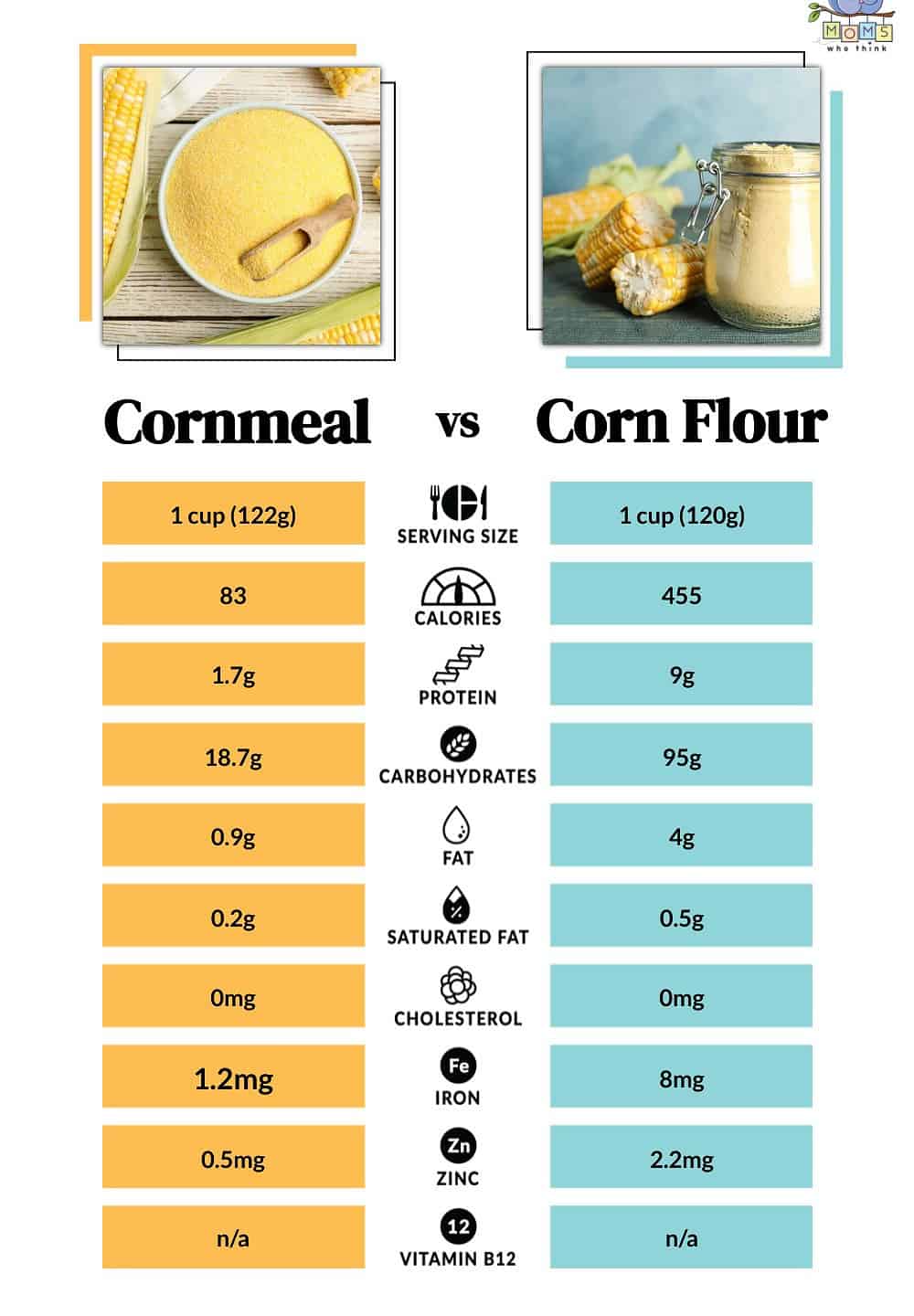
What is Cornmeal?
Cornmeal is a corn-based food made from coarsely ground dried corn. Traditional cornmeal, which is milled directly from dried hominy, was once a staple food in much of the Midwestern United States and the Southeastern United States. As with other grains, high-gluten hybrids have greatly reduced its popularity. However, it remains popular in some areas such as northern Appalachia and the Ozarks.
Cornmeal can be ground from either dent or flint corn varieties; however, flint corn produces a coarser meal than dent corn because its hard outer layer cannot be removed by cracking or milling. Dent corn has a softer outer layer that can be removed by mechanical means; thus it produces finer products than flint corn.
The manufacturing process removes the germ and husk from the corn to make it last longer. It has a range of textures from medium to coarse, with very few instances where you may get a fine cornmeal. There are three types of cornmeal; white, yellow, and blue, with little to no taste difference. However, recipes are specific to a particular style. For example, making polenta requires yellow corn, while grits work well with white cornmeal. Cornmeal can also be used in pancakes, biscuits and gravy, tamales, polenta, and even grits. Cornmeal can be added to any dish that calls for flour to thicken the mixture or add flavor to it.
Stores have bags or packets of plain cornmeal or as an ingredient in other products like a box of polenta. Go for the simple cornmeal box if you want to use it on a range of recipes instead of limiting yourself to a small percentage.
Cornmeal comes in several varieties: coarsely ground, medium ground, and finely ground. The coarseness of the grind affects how quickly the cornmeal absorbs moisture in a recipe; the finer it is ground, the faster it soaks up liquid.
Cornmeal can be found in most grocery stores near the baking supplies area or near the canned goods aisle where canned vegetables are sold.
Uses of Cornmeal
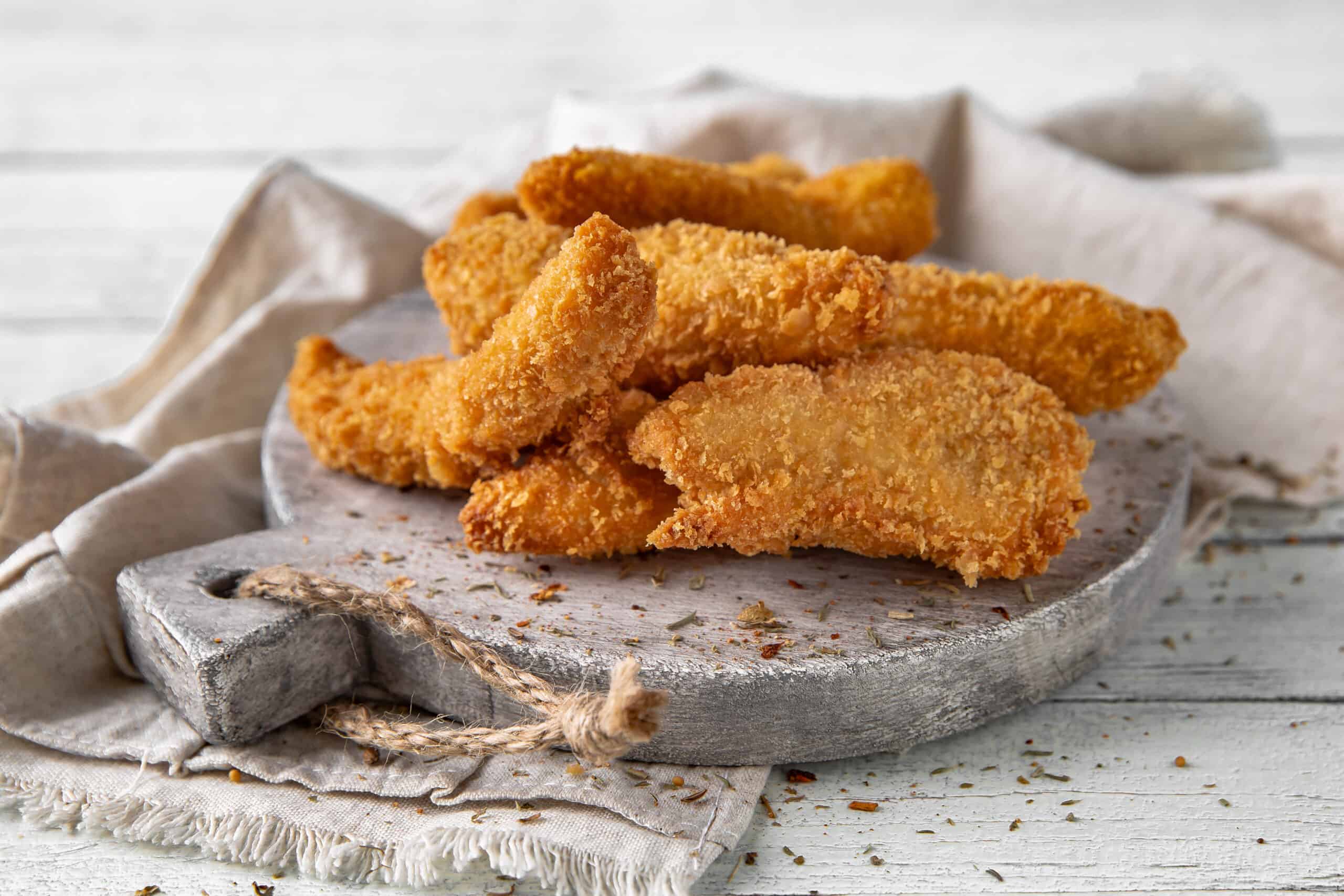
Chicken fillet breaded in cornmeal. Delicious crunchy, hearty meat appetizer!
©MaryLucky/Shutterstock.com
Cornmeal adds good benefits to a dish. It’s an excellent product for making muffins, cornbread,
dried crusts, breading, frying, fish, chicken, mozzarella sticks, etc. Grits and polenta are also famous for using cornmeal, which you have to soak and slow-cook to make. Different recipes require cornmeal in a specific texture. Knowing the kind you want, from medium to coarse, is vital so it works perfectly for your dish.
White cornmeal has a mild flavor that works well with eggs, milk, or other strong flavors; yellow cornmeal has a stronger taste that marries well with meats such as chicken or pork. Both types of meal can be used as breading for fried foods or as an ingredient in recipes like pancakes or muffins. They can also be added to soups or chili for texture and color.
Medium-ground cornmeal is the most common, suitable for foods such as porridge and cornbreads. It’s also the go-to for many, especially if the recipe is not ingredient-specific and you are unsure which to choose.
Cornmeal takes longer to cook and has a unique, intense flavor you should consider while
cooking. The rough texture adds a crunch to dishes, which is great for some recipes. However, avoid making desserts and baked goods with cornmeal as they don’t hold well. They become crumbly and fall apart quickly.
In addition to its use in cooking, cornmeal can be used as an ingredient in cosmetics and personal care products such as shampoos, facial scrubs, and lip balms.
What is Corn Flour?
Corn flour is a popular whole-grain flour made from dried corn. The flour is primarily yellow but
with a few variations of white and blue. Corn flour contains all parts of the corn grain, as no
detail is removed during processing. It includes the nutrient-filled germ, hull, and endosperm,
making corn flour beneficial to the body.
Corn flour is made by grinding dried corn kernels into a fine powder. The flour is high in carbohydrates and should be combined with other types of flour when making baked goods to ensure they have the proper texture.
Corn flour is available in several different forms, including whole-grain, white and yellow cornmeal, masa harina, and polenta. It can also be used as an ingredient in gluten-free baking as long as it's not used alone but combined with another flour such as rice flour or quinoa flour.
The main difference between these types of cornmeal is their color and texture; some are darker than others, while some are more finely ground than others.
Some countries refer to corn flour as ‘fine corn meal’, causing a lot of confusion to those who
need help differentiating them. Nevertheless, ensure you leave the store full if you can spot a ‘fine cornmeal’ packet on the shelves. Corn flour is popular in South America, Central America, Mexico, India, and China. It is used in baking to make bread and pastries with a firm texture.
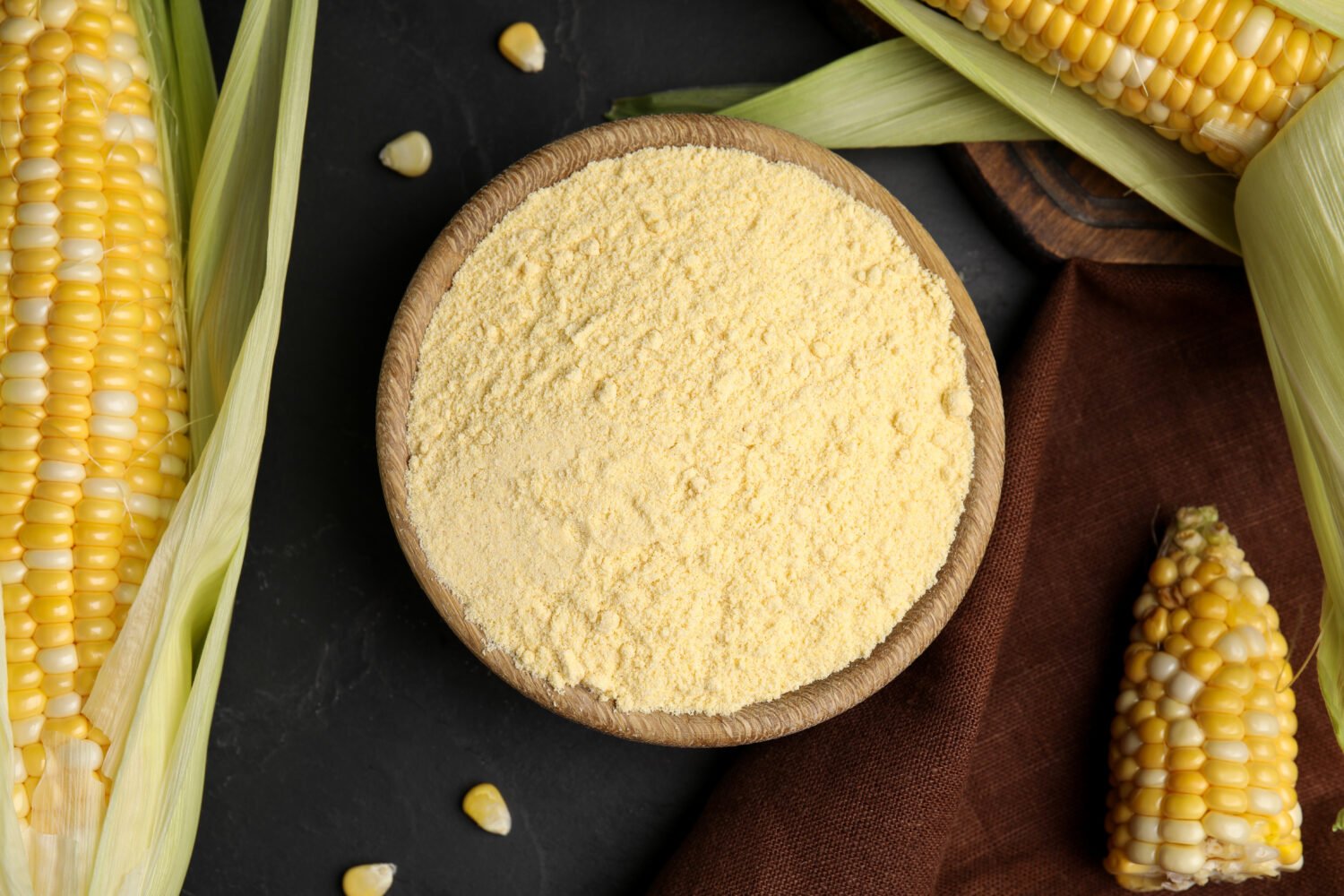
Its fine texture makes corn flour an excellent dusting powder, thickener, and breading agent.
©New Africa/Shutterstock.com
Corn flour can also be used as a thickener in cooking, as a dusting powder on fried foods, and as a breading for fried chicken and fish. It has less gluten than wheat flour or all-purpose flour, so it does not produce the same elasticity in the dough when kneaded. The gluten content depends on how finely the corn is ground: A coarser grind produces more gluten than a fine one does.
- The must-have convenient reference guide for every home cook!
- Includes more than 8,000 substitutions for ingredients, cookware, and techniques.
- Save time and money on by avoiding trips to grab that "missing" ingredient you don't really need.
Uses of Corn Flour
Corn flour is ideal for baked items. It binds much better than cornmeal; hence the baked products
remain firm and intact. You can use the flour for your batters, e.g., waffles and pancakes, to
achieve a thin, robust, crispy crust. Corn flour is also helpful for bread and cake making.
Some people refer to corn flour as Masa Harina, which is wrong. Both are flour made from corn
but differ in their processing. Manufacturers soak Masa Harina in lime water before milling,
giving it a distinct taste. Corn flour has no soaking stage, so they are two different products. You
can use them interchangeably, but they are different.
Cornmeal vs. Corn Flour: Can You Use Them Interchangeably?
You can use cornmeal and corn flour interchangeably. There will be little to no change in flavor,
but you must recognize the texture. Cornmeal is coarse, while corn flour is fine and smooth.
Avoid corn flour on cornbread and porridge despite the possibility of replacing one with the
other. People love cornbread for its crunchiness and crumbly nature; corn flour doesn’t
provide that.
Interchangeably, you can use cornmeal and corn flour to make fry batters. Cornmeal batter
makes crunchy and thick items, while corn flour batter produces thin and crispy foods. You can
also mix both products to create a balanced texture for your recipe. Corn flour is a better
ingredient for baking than cornmeal. Corn flour makes baked goods solid, light, and fluffy, while
cornmeal makes them dense and quite fragile.
Remember that cornmeal is heavier than corn flour, so you can't use them in the same ratio when cooking. You need more corn flour to make a similar cornmeal dish.
Alternatives for Cornmeal
Cornmeal is a staple in Southern cooking. It can be used as an ingredient in cornbread, muffins, pancakes, and waffles. It's also a common coating for fried fish and chicken.
There are several alternatives to cornmeal that you can use in your cooking. They include:
- Buckwheat Flour: This distinct substitute doesn't belong to the wheat family nor does it contain any gluten-related elements hence proving its uniqueness. Buckwheat strives to provide a nutty flavor with subtle sweetness which helps in replacing cornmeal's peculiar taste. You can use buckwheat flour as a coating for fried chicken or fish, and waffle and pancake recipes, among others.
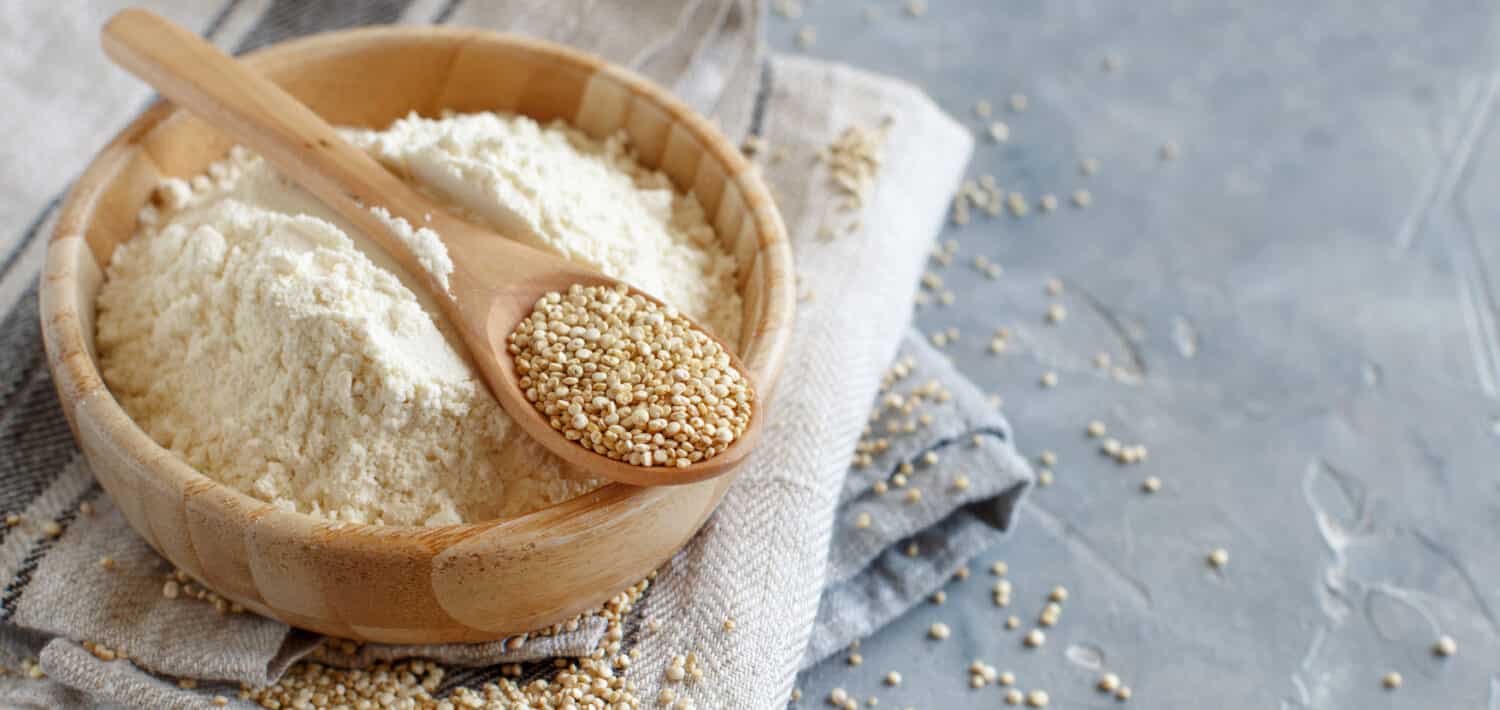
Quinoa flour is an excellent alternative to cornmeal.
©Katrinshine/Shutterstock.com
- Quinoa Flour: Being seed-like, as opposed to grain, highlights how quinoa portrays close links with beets, spinach, etc. Having all nine essential amino acids in considerable amounts satisfies the protein requirements of vegetarian diets enthralled by abstaining from meat. Quinoa's bland flavor assists in soaking up moisture expeditiously during baking procedures such as muffin compositions and cookie compounds.
- Rice Flour: Pounded white rice forms into rice flour which is an adequate substitute for those who experience sensitivity or allergies to gluten proteins, since rice flour doesn't contain any concerning elements. To replace rice flour efficiently instead of pulling cornmeal add extra quantities of liquid (water or milk) during preparing process while following the original recipe directions.
- Potato Flour: Potato flour is produced by drying potatoes thoroughly and then grinding them into fine powder-sized proportions. Potato conveys a secondary sweet taste that amalgamates multiple gluten-free baking mergers. In situations when preparing a recipe that initially requires cornmeal whose substitution calls for potato flour, add extra moisture either via milk or water following the recipe's directions.
Alternatives for Corn Flour
Milled chia seeds are another alternative to corn flour that works well in many recipes. They're made from ground chia seeds that have been milled into small particles similar in size and texture to cornmeal (but not as coarse).
One advantage of using milled chia seeds over cornmeal is that they don't absorb moisture as quickly — which makes them ideal for thickening soups, stews, and sauces without having them turn out lumpy or watery. Milled chia seeds are also an excellent source of fiber and protein (plus omega-3 fatty acids), which makes them a healthy addition to any healthy dish you may have in mind.
If you’re looking for a low-carb alternative to cornflour, try arrowroot powder or potato starch instead. Both are also gluten-free and can be used as substitutes for cornflour in recipes where the recipe calls for it.
If you are trying to avoid certain grains, consider using coconut flour instead of corn flour. Coconut flour contains no gluten, so it’s safe for those with celiac disease or other food allergies.
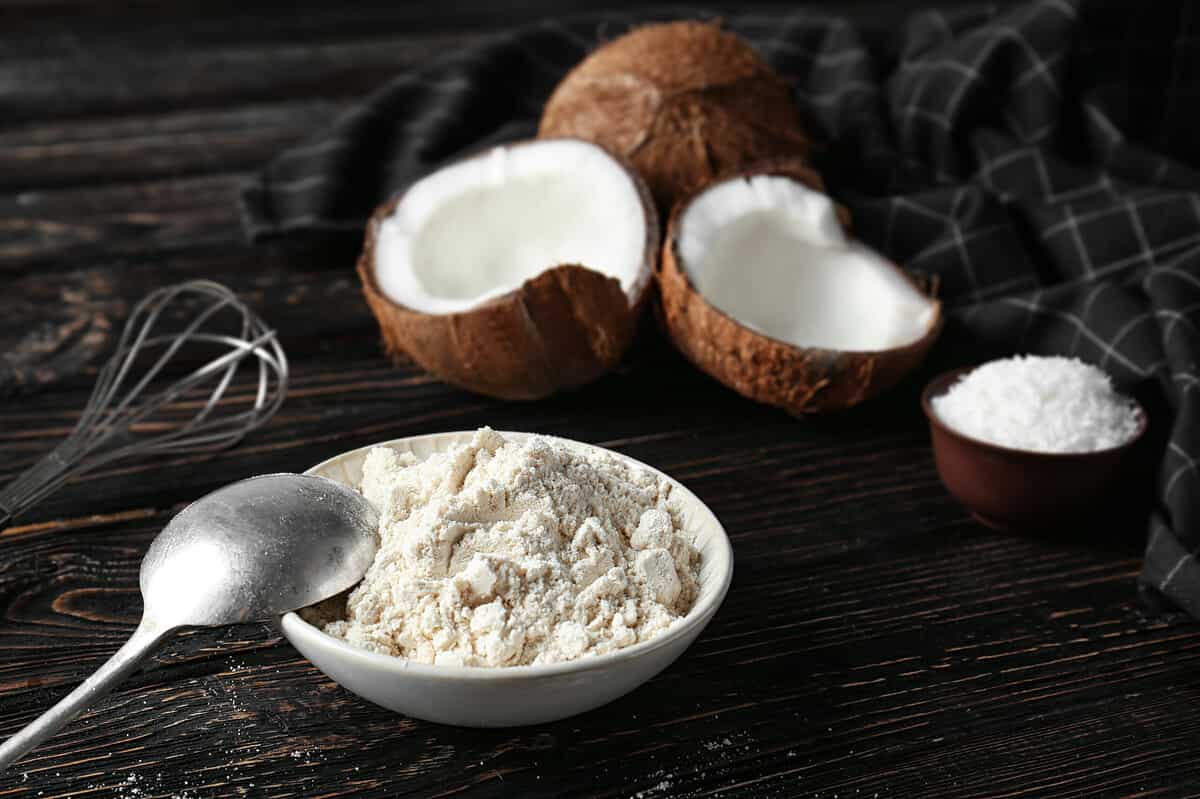
Coconut flour is an excellent gluten-free substitute for corn flour, perfect for those with certain food allergies.
©Africa Studio/Shutterstock.com
Conclusion
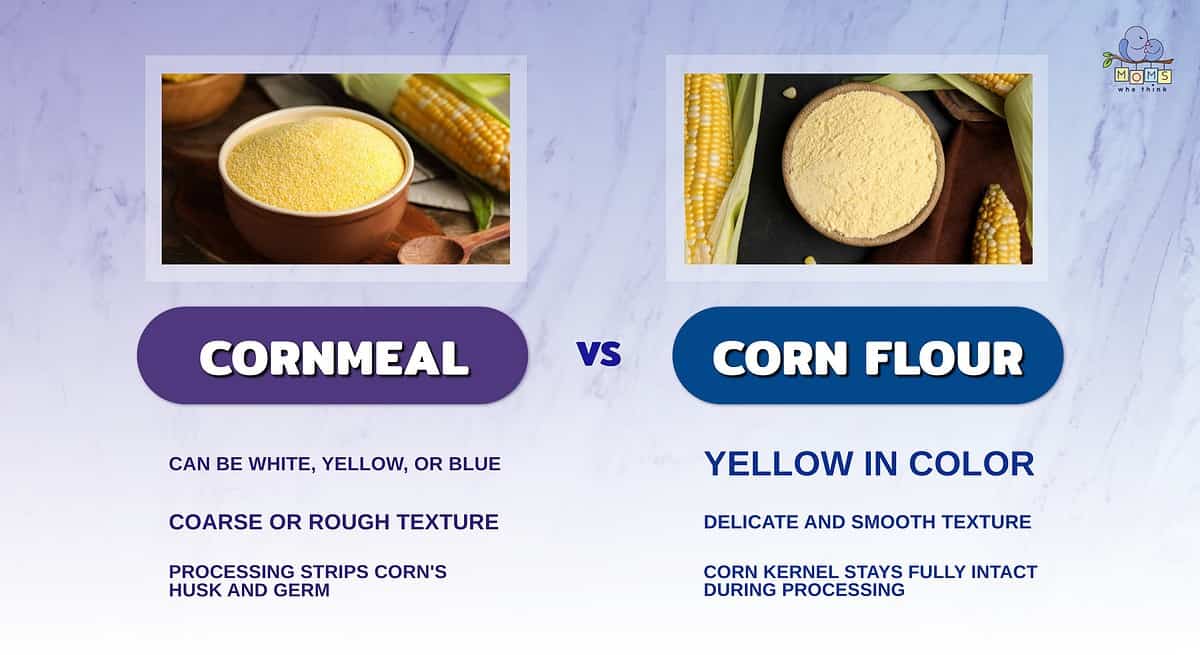
- Cornmeal can come in three different colors depending on the type of corn used: white, yellow, or blue. In contrast, corn flour only comes in yellow.
- The texture of cornmeal is rough or coarse, while corn flour has a delicate and smooth texture. This difference is one easy way you can tell the two apart.
- During processing, the husk and germ of the corn kernel is stripped away to make cornmeal. The corn kernel stays entirely intact during the manufacture of corn flour.
Cornmeal and corn flour have distinct differences in their texture. The texture affects their use in
recipes though you can use either in place of another in some dishes. Cornmeal is healthier than corn flour, but consuming them in moderation is the best idea due to the high calories. The
powdery texture of corn flour makes it an excellent thickening agent for soups and gravies.
When buying cornmeal, please focus on the type, e.g., yellow, white, or blue, and their textures.
Also, it’s advisable to read the packaging as some regions use the names interchangeably.
Want an easy and delicious crock pot recipe that uses cornmeal? Take a look at this:
Print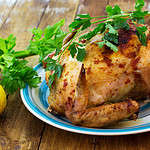
Crock Pot Chicken with Cornmeal Dumplings
Ingredients
1 (9 oz.) pkg. frozen cut green beans
2 cups cubed, cooked chicken
2 cups diced potatoes
1 (13 3/4 oz.) can chicken broth
1 (12 oz.) can vegetable juice cocktail (1 1/2 cups)
1/2 cup sliced celery
1/2 cup chopped onion
1 teaspoon chili powder
1/2 teaspoon salt
6 drops bottled hot pepper sauce
1 1/4 cups packaged biscuit mix (like Bisquick)
1/3 cup yellow cornmeal
1 cup sharp shredded cheddar cheese
2 Tablespoons fresh parsley
2/3 cup milk
Instructions
1. Thaw beans by placing in strainer and run hot water over beans. Transfer to crock pot.
2. Add chicken, potatoes, chicken broth, vegetable juice, celery, onion, chili powder, salt and hot pepper sauce, mixed together. Cover.
3. Cook on low for 4 hours. Turn to high heat and heat until bubbly. Add water at this point if needed.
4. Combine biscuit mix, cornmeal, 1/2 cup of the cheese and parsley. Add milk and stir until just moistened.
5. Drop by tablespoons onto stew; cover. Cook 2 1/2 hours more (don't lift cover). Sprinkle dumplings with rest of cheese.

